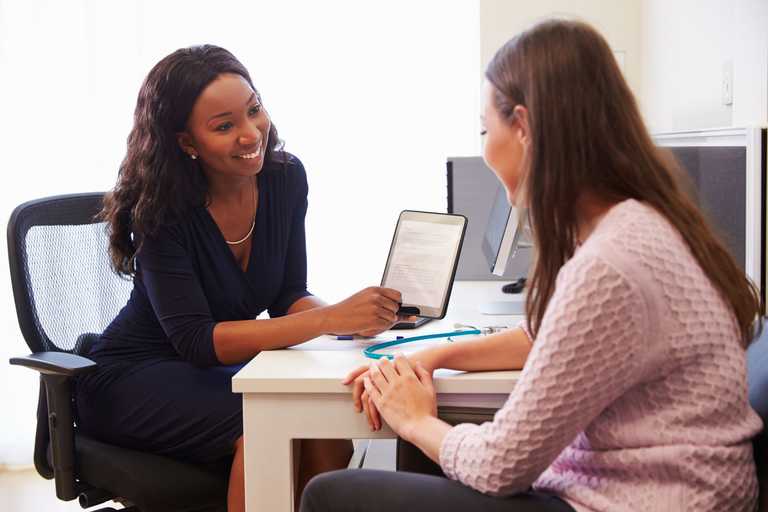Complete Diagnostic Care with Prime Diagnostic Plus
Our all-inclusive diagnostic scanning package offers everything you need for quick, expert care—all for a fixed price.
Learn more

I’m starting this month’s update with a curious article I read in a recent edition of New Scientist (NS).
It has previously been demonstrated that humans, subconsciously are attracted to the body odour of people in good health. The explanation being that this is some sort of evolutionary adaption to ensure the “survival of the fittest.”
A recent article in the NS takes this one step further and reports on a paper from the Proceedings of the Royal Society, claiming that we are also naturally attracted to the faces of individuals who have well developed immune systems.
Faces are not inherently attractive or unattractive, so for a long-time scientists have wondered what makes one face attractive and another less so. What is it over the course of our evolutionary development that has led us to be attracted to some faces rather than others? To investigate this further a team from Texas Christian University recruited 159 men and women, with an average age of 20 years, and took headshots of the subject with neutral facial expressions.
They then asked the participants to complete a health questionnaire and took blood and urine to provide them with a health profile. They then recruited another 492 women and men, with an average age of 25 years and asked them to rate 25 of the previous headshots (both hetero and homosexual participants were involved).
The team then looked at the immune function of the individuals whose pictures had been rated and found that those with the higher attractiveness scores also had higher scores for immune function. This was based on what’s called phagocytosis; – the ability of white blood cells to attack and destroy bacteria. They also found that the same group also had lower levels of a type of white blood cell call neutrophils; (cells used in phagocytosis); – which implied that their existing white blood cells were very efficient at killing bacteria.
These results are fascinating and, at face value, could be taken to demonstrate that individuals rate faces according to the individuals’ immune functions as this would clearly give the individuals an evolutionary advantage. Thus is, any children from these couples are likely to have well developed immune systems and hence have a survival advantage.
However, and there’s always an ‘however’ in medical research… how do we know that these results are not just correlation? Sadly, the short answer is we don’t. It may be that some other reason or reasons are the cause of facial attractiveness, and that immune function is just an association. The history of medical research is littered with teams assuming causation when in fact it was just a correlation. However, for now, it’s a very interesting result and one that will, I am sure receive further investigation.

Let’s turn next to a paper from the British Medical Journal (BMJ) by Han et al. which considers the relationship between Vitamin D and Omega 3 fatty acids, and autoimmune disorders such as rheumatoid arthritis or autoimmune thyroid disease.
This was a randomised control trial from the US involving just over 25,000 individuals. One group were given Vitamin D (2000 units a day) and another group Omega 3 (1000 mg per day). These two groups were then matched against identical control groups who were given a placebo. The team then asked the participants to report the development of any autoimmune disorders over a five-year period. (These were confirmed by a variety of medical tests.)
When they analysed the results, the team found that in the Vitamin D group, 123 individuals developed an autoimmune disease compared with 123 in the control group. In the Omega 3 group, 130 developed an autoimmune disease compared to 148 in the control group.
Thus, Vitamin D supplements appeared to reduce the incidence of autoimmune disorders by 22% and Omega 3 by 15% (the Omega 3 result was, however, not statistically significant).
So, what’s the take-home message from this? The statistically significant bit is important because it does mean that in theory, the Omega 3 result could have happened by chance alone. However, having said that it looks like there may be a protective effect from both Vitamin D and Omega 3 and this study is saying more work is needed on a larger sample size to confirm these effects.

A brief note from a paper published in the Journal of Neurology looking at the effect of dietary flavonoids on Parkinson’s disease. Flavonoids are commonly found in foods such as tea, apples, oranges, berries and in red wine.
The research team looked at data from 600 women from an existing study in the US, the Nurses’ Health Study and just over 650 men recently diagnosed with Parkinson’s Disease from the Health Professionals Follow-up Study.
There were 944 deaths during the study period, which was over 34 years, and the team noticed that a higher flavonoid intake was associated with a lower risk of death in men but not women. These results were after taking into account age, smoking habits and several other important factors that affect mortality.
Among the different flavonoids, anthocyanins, found in red wine and berries, and flavan-3-ols, found in tea and chocolate, had the greatest effect. So, tea and chocolate all round!
Finally, to a recent paper in the journal PLOS, looking at chronic diseases and psychiatric disorders.
The research team used national registers to study all individuals born in Sweden between 1932 and 1995 who were subsequently diagnosed with one of several chronic conditions (chronic lung disease, heart disease and diabetes). They studied these individuals to determine who also had a psychiatric disorder. These individuals were then compared with a control group who had chronic physical diseases but did not have a psychiatric diagnosis.
The team found that within 5 years of the diagnosis of a chronic physical condition 7% of the individuals had died and 0.3% had committed suicide.
Those with a co-existing psychiatric condition had a risk of death between 15-20% and a suicide risk of 1.2-1.6%. Both being significantly higher than the group who just had a physical disorder.
The conclusion from this study, which has consistently been reproduced in other studies, is that those with a coexisting psychiatric condition on top of a chronic physical condition have a higher risk of death. The reasons for this are far from straightforward. It appears that somehow the psychiatric disorder worsens the effect of the physical disease. The take-home message however is very clear – that we need to look hard for the presence of any mental health problems in those with chronic physical conditions and when found treat the condition rigorously and fully.
Please remember any views expressed in the blog are mine alone, and the information is not to be taken as medical advice.
Our all-inclusive diagnostic scanning package offers everything you need for quick, expert care—all for a fixed price.
Learn morePrime Health Surrey has enhanced its healthcare offering with the installation of a state-of-the-art CT scanner. Appointments available.
Learn moreIn partnership with the General Practice Group, we have extended our Private GP service to our centre in Harley Street, London.
Learn moreIn partnership with the General Practice Group, we have extended our Private GP service to our centre in Brighton.
Learn more

